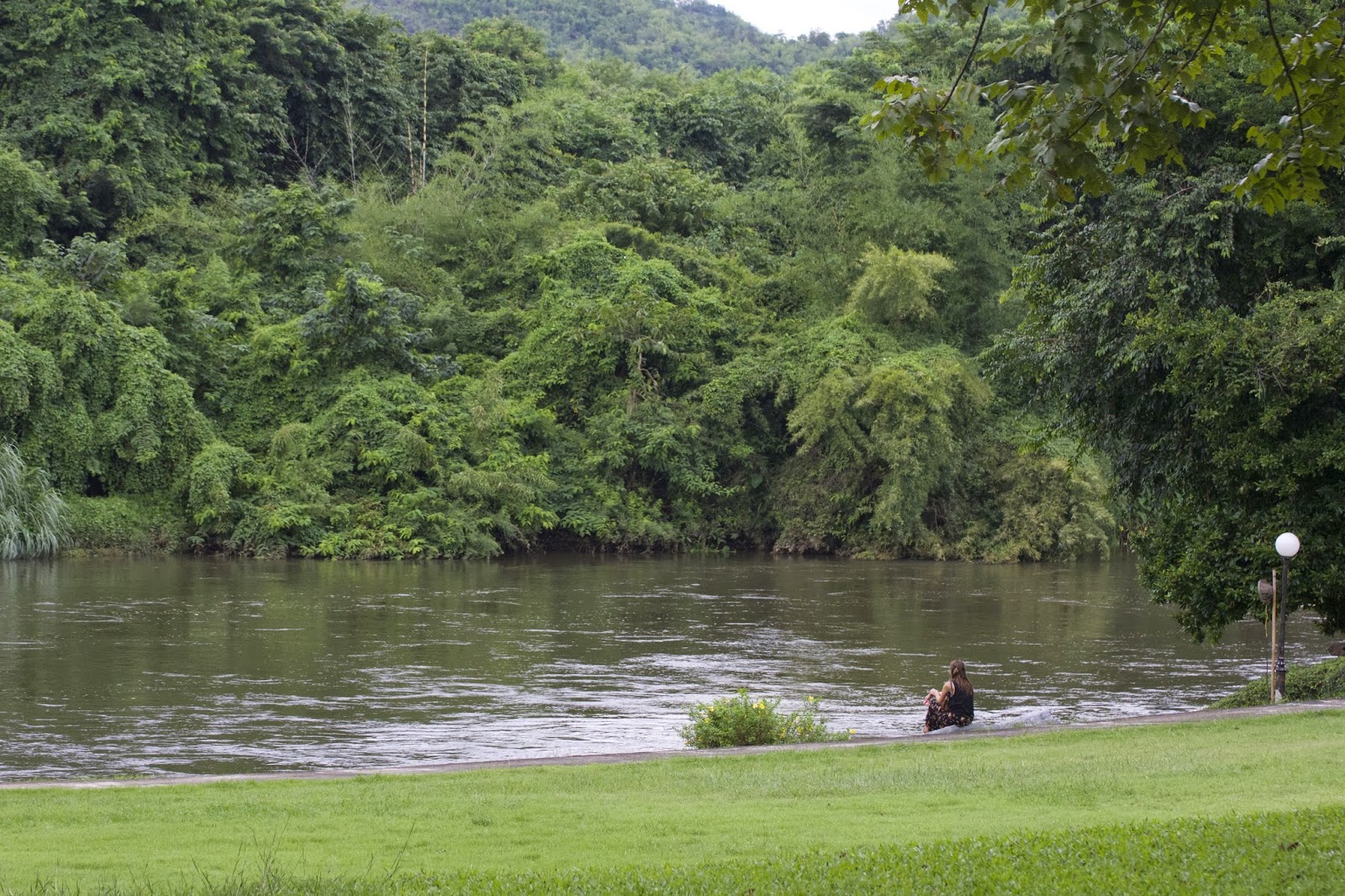After one week of orientation it was time to go our separate ways. The last day of orientation I was picked up by my coordinator from my school. She spoke some English so we chatted about our backgrounds on the two hour drive from Kanchanaburi to Don Chedi in Suphanburi Province. I gave her a tote bag from Pike Place Market in Seattle (I visited my wonderful uncles Jim and Richard while en route from Minnesota to Thailand) as a gift. My coordinator turned to me and said, “You teach… tomorrow!” in a half-question, half-answer kind of way. “Sure!” I said.
We drove past expansive rice fields bordered by great tall palm trees. Many species of wading birds love to hunt here!
We drove onto the school grounds and the first thing I saw was a huge poster featuring the local football (soccer) team— Suphanburi FC! I like this already. After only one short week in the country my Thai was still very, very limited. I was introduced to so many people in one big whirlwind of smiles and wai’s. I also met the director of the school— what ceremony! I was instructed to be ‘very polite’. A tug of the forelock should do.
 |
| Gie Gie and I preparing for our Thai dance! |
Next I was led to a different building and into the foreign teachers lounge. Here I met two of my roommates— Gie Gie and Stephen. They are from the Philippines! They have become dear friends since I’ve been here. I also get to learn about yet another culture through them. This of course includes food as a very important component of that culture— YUM! Gie Gie is an excellent cook and makes a mean Adobo! We also live with two teachers from China.
The first day of school was a huge jumbled mix of excitement, anxiety, confusion, and joy. I got to school early so that I could get my schedule— or so I thought. Instead I was instructed to go to the front gate with the other foreign teachers and greet all of the students I had never met before. Many of them just stared and completely forgot to wai. Some would giggle, turn to their friend and point at their head, indicating their fascination with the shaved part of my head (I often responded by looking right at them and saying hi as if you say “Yep, I know you’re talking about me! Hello!!!”).
I look quite different from the other teachers, even the foreign ones. The majority of the foreign language department consists of Philippino and Chinese teachers, with one gentleman from England (who is also half-Zambian). So, as you can imagine, my ‘European mutt’ ancestry makes me stand out. In my first few days I was quite taken aback by all the staring, but I quickly got used to it and learned to use it as a tool to interact with students and help them practice their English (and perhaps a chance for me to learn/practice my Thai). This experience has given me an even deeper appreciation for folks such as immigrants who move permanently to a new place where they are not surrounded by the roots of their own culture, where they have to navigate a new place in a new language. Now I can almost imagine how much harder that would be than what I am doing. They are incredible.
Anyway, back to the first day. After finishing my greeting duties I was informed that the person who has my schedule is absent. So, I am led from class to class the whole day by another biology teacher who speaks some English but not a lot. When I enter the room I have no idea what grade level the students are, what they’ve already learned, nor how much English they can understand or speak. The first class I taught was also a two-hour class, which I didn’t know until I was packing up my things to leave after the first hour an the other biology teacher stopped me, saying, “You teach! You teach!” So after a second hour filled with randomly improvised activities we moved on. I soon found out that most of the students speak less English than I was expecting. In this first week I wanted the students to ask question about me, but even giving this instruction proved to be very difficult to understand. If I say “What do you want to know about me?” I get blank stares. If I say, “Take out your notebook” I get blank stares. If I say, “What do you want to learn in biology?” I get blank stares. Visuals and acting things out has made communication much more fun and a bit easier.
After they learned a bit about me and I learned about them, I wanted to see how much they knew about human anatomy. Plus, this exercise was a game, and games make anything more fun! I drew the outline of a human body (I still do it the way I learned in Costume Design I class at UMD and thankfully it looks vaguely humanoid still) and explained through acting that I wanted people from each team to come up and label parts of the body. One point per body part. The team with the most points wins. And the results were hilarious…
 |
| (Roger Skeeter is that you?) |
And so ended the first day of class. Phew.


















































